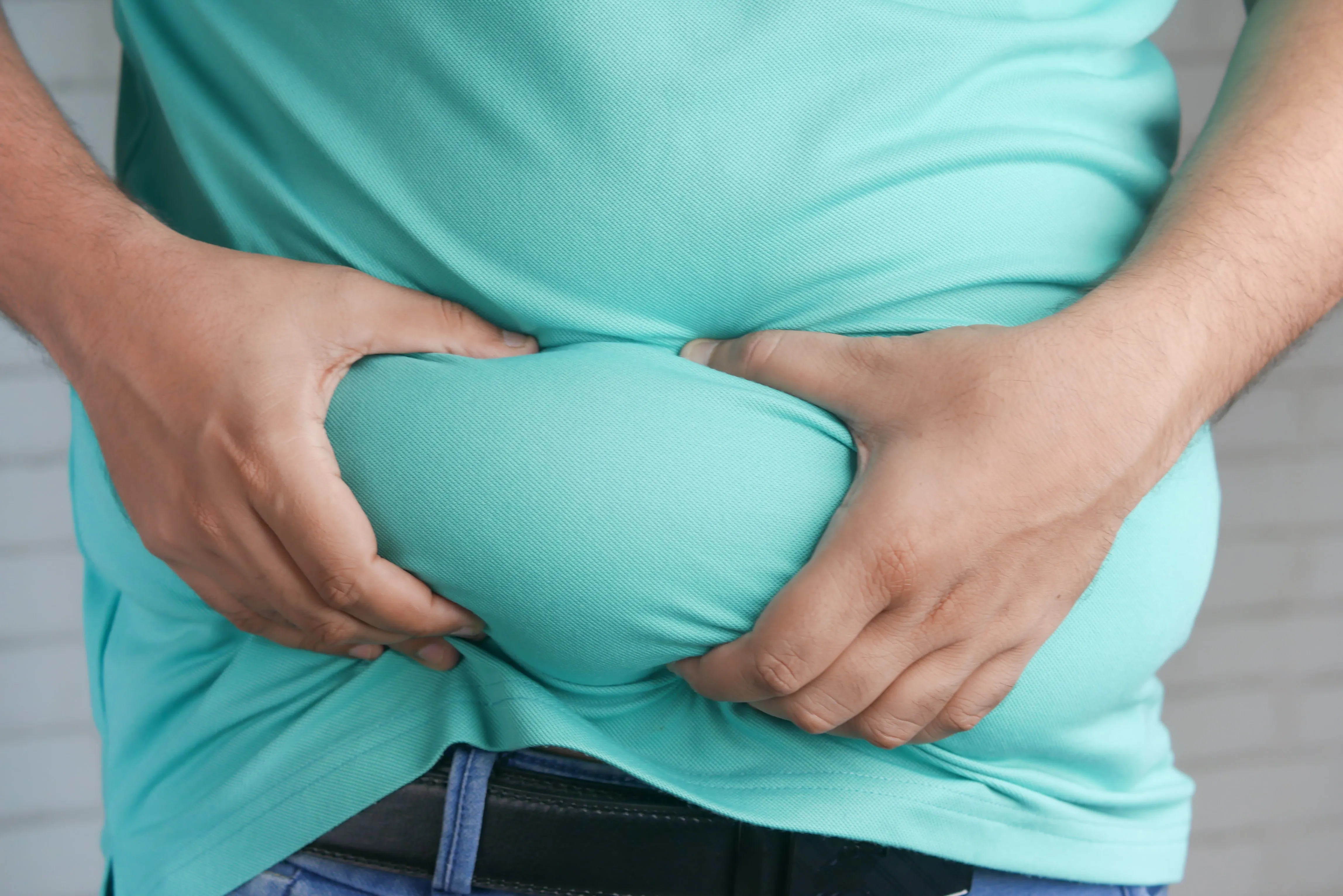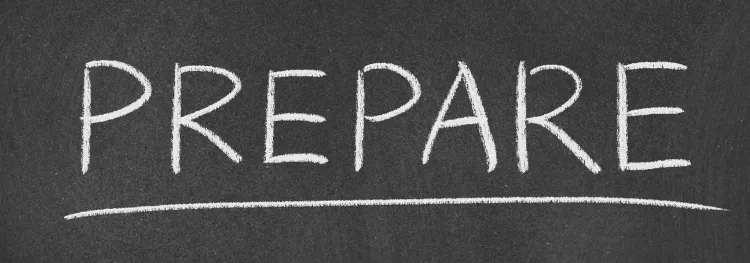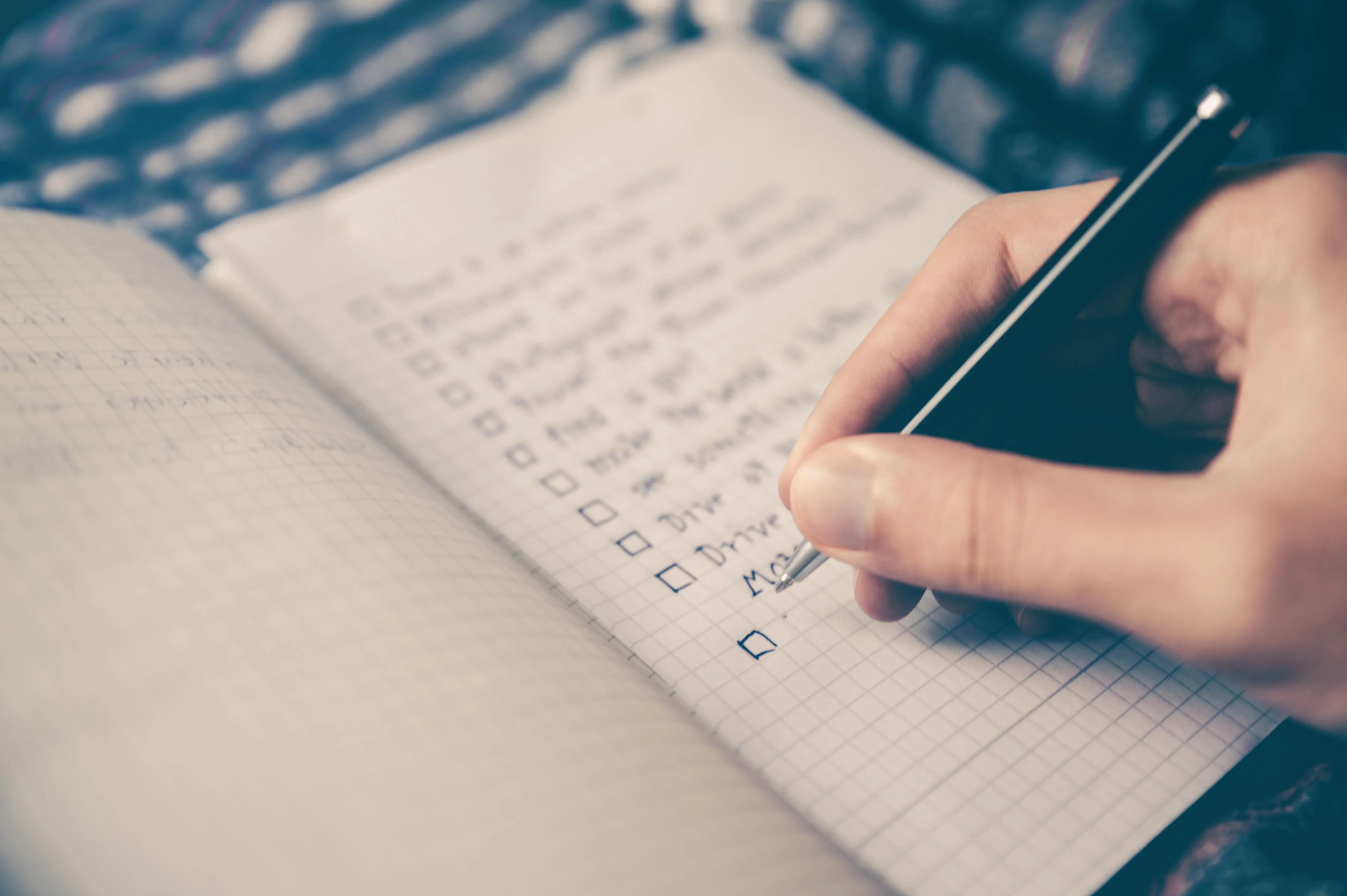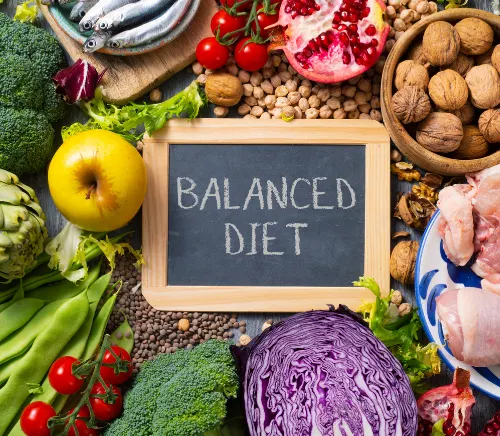The Secrets To Permanent Weight Loss

The National Health and Nutrition Examination Survey reported in 2014 that over 70% of Americans are overweight, obese or extremely obese.
In light of these statistics, it shouldn't come as a surprise that heart disease is the leading cause of death among Americans.
The dangers of being overweight
Several dangerous health conditions can develop if you are overweight.
Despite genetic and other lifestyle factors contributing to many of these conditions, obesity increases the risk of contracting them.
Obesity increases your risk of developing the following conditions:
• Heart disease
• Stroke
• High blood pressure
• Diabetes
• Gallbladder disease
• Gallstones
• Osteoarthritis
• Gout
• Sleep apnea
• Asthma
• Cancer
The reasons why you should lose weight
The main reason you will want to lose weight if you are obese is to reduce or eliminate your risk of developing these conditions.
We're going to look at a few of the benefits of losing weight and attaining a normal, healthy body weight, some of which may surprise you, but all are proven to be effective.
Losing excess weight has the following benefits:
- Higher salary/pay
- Improved cognitive function
- Food tastes better
- Increased libido
- Decreased dependency on certain medications
- Less general pain/discomfort
- Better sleep
- More energy
- Enjoy more activities
- Hair and skin that are healthier
- Save money
Taking into account all of the dangers associated with being overweight and the benefits associated with losing weight, it is clear that good health is a necessity.
The process of losing weight can be challenging for many reasons, several of which we'll cover in the next section, so keep reading to find out more about how it can be done.
Get Your Head In The Game
There are a variety of reasons why overweight people are unable to lose weight, but unless they have a legitimate medical condition preventing them from doing so, their mentality is the biggest barrier. Losing weight can be difficult or even impossible for some people for a number of reasons.
You have the wrong idea about food
In many cases, people eat to comfort themselves or entertain themselves, not because they are hungry or to sustain themselves. They eat because they are sad, happy, or bored. It's common for us to eat comfort foods when we're sad, and they're often high in carbohydrates and unhealthy fats.
The way you view food is to think about it for what it really is: a tool for supplying nutrients to your body. It can make you gain weight or lose weight depending on how you use it. If it’s used correctly, it can make you healthier or cure various afflictions. However, if it’s used improperly, it can exacerbate existing conditions or worsen them, leading to sickness.
It's hard for you to change your habits
For most people, losing weight and maintaining it requires having good habits. However, many don’t want to change their habits for the long run because they feel stuck in their ways. It is possible to lose weight fast with a crazy crash diet, but you will most likely go back to your old habits as soon as you have lost a few pounds, so you won’t be able to keep it off forever.
When it comes to losing weight and keeping it off, you must be willing to change your habits, particularly when it comes to eating. You are all a result of your habits, from the way you live to the way your house looks. The only way you can lose weight is to change your bad habits and replace them with good ones.
Your Weight is Connected to Psychological Problems
It is common for people to experience deep psychological problems relating to shame and a fear of getting close to others that affect their relationship with food and eating habits. As a result of feeling ashamed, they eat to cope with it. Their extra weight is a way for them to avoid being vulnerable with people or to prevent them from getting too close to them because they are afraid of being vulnerable.
It may be hard to admit, but if you fall into this category of having these deep-seated issues, you won't be able to start your weight loss journey until you get professional help to deal with these issues. In the same way that you would see a medical doctor for a medical issue you can't solve yourself, you shouldn't feel ashamed to consult a doctor for psychological care.
Once you get mentally prepared to lose weight, it's time to move on to the next step in the preparation process.
The Preparation Process

To lose weight, it is important to prepare yourself before beginning a new diet. For one thing, if you don’t know where you’re starting from, then it won’t be easy to see the progress you’re making since weight loss is often slow and steady. Here are a few things you should keep in mind before you begin your weight loss journey.
Visit a health professional to get a checkup
It's a good time to see a doctor if you haven't already. For some people, losing weight is impossible due to a medical condition underlying their behavior. Hypothyroidism is one of the most common conditions that lead to weight gain.
In hypothyroidism, many of your body's processes, including your metabolism, slow down, which makes it impossible for you to lose weight no matter what you do. Working against your body is impossible because you will be working against your body. You will have to consult your doctor first to correct the hormonal imbalance to lose weight.
In addition to seeing your doctor before getting started, if you intend to exercise during your weight loss journey, you should also do so. Despite the fact that food is the most important factor, exercise can also boost your weight loss. Hence, before starting an exercise program, make sure your doctor approves it.
Establish your goals in writing

You should have two basic types of weight loss goals, one primary, long-term goal and smaller milestones that will help you reach that goal and keep you motivated. Consider where you are now and where you want to be. Once you've set your long-term goal, whether you're looking to lose 30 pounds or 100 pounds in five years, make sure it's realistic.
As soon as you have defined your long-term goal, you can begin setting up your milestones. To do this, divide the total weight loss that you intend to lose into five or ten pound increments. You should also set specific deadlines for these as well. Keep in mind, though, that you are likely to lose weight faster at the beginning, so keep that in mind.
Set Up Your Rewards
You should set up a reward for yourself at each milestone and at the end of the long-term goal so that you will look forward to it. More important than its size, it should not be food-related. It defeats the purpose of losing a pound if you let yourself eat an entire chocolate cake after losing a pound.
If you want a good reward, you might consider going to a movie, buying a fashion accessory, attending a sport's game, or even taking a trip somewhere you've never been before. You'll keep working harder if you have something to look forward to, even when your day is tough.
Establish Your Baseline
The baseline serves as your starting point and can be used as a tool to remember how far you have come. Calculate your BMI, weigh yourself, take pictures, and measure your body. Some people will have trouble with this, but it’s important to know so you can really see your progress, since sometimes the mirror alone makes it difficult to see a difference.
You'll want to measure the circumference of several parts of your body as this will help you track your weight loss more effectively than the scale alone. Use a tape measure that is not stretching. It should also be parallel to the floor, at the same height around the part of the body you are measuring, and not pulled too tightly when you lay it on your skin.
You will want to measure the following parts of your body to track your weight loss:
- Chest: Men should measure around the thickest part of their chests. Women should measure directly under their breasts.
- Chest: For women only, measure around the breasts, keeping the measuring tape parallel to your nipples.
- Waist: You should take your waist measurement around the narrowest part of your torso, which is usually above your belly button.
- Midway: Take this measurement halfway between where you took your waist measurement and the widest part of your hips.
- Thigh: The thickest part of your upper leg should be measured while standing.
- Knee: For this measurement, you'll need to measure right around your knee.
- Calf: Measure this part of your lower leg around at the widest part.
- Arm: The upper arm is measured around the fullest part.
- Forearm: Thisshould be measured around the thickest part, usually slightly below the elbow.
Get educated
By reading this guide, you are already doing this. And, you can continue reading to find out even more about how to lose weight and keep it off by reading more. In the next few weeks, you'll discover how nutrients work in your body, how to lose weight quickly, effectively, and permanently, and how to use the right diet.
Diet & Nutrition Overview

Dieting has two main keys: WHAT you put into your body, and HOW MUCH you put into your body.
People who are overweight or obese often don't put in the right things into their body, and they put in too much. Let's talk about both.
Macronutrients
A macronutrient is one of three primary nutrients you consume: carbohydrates, proteins, and fats. As there are various types of each macronutrient, we’ll focus on what is the most important to know about each one. Of course, each of them can be subcategorized further, but we’ll focus on the most important details about each one.
Carbohydrates
A carbohydrate is a substance with carbon, hydrogen, and oxygen in its molecules. The primary purpose of carbohydrates is to provide energy for the body, and they include sugars, starches, and fiber. Contrary to popular belief, not all carbohydrates are unhealthy. The majority of people who eat diets that contain plenty of carbohydrates are thin and healthy.
Your body can also get energy from fat, so you should eat a diet that is relatively low in carbohydrates. If you include carbs in your diet, make sure they are complex ones like those found in whole wheat. These will be broken down slowly by your body and release sugars slowly into your blood stream.
If you consume refined white sugar, which is commonly found in foods, you will cause your blood sugar levels to spike when it enters your system. It causes your digestive tract to release too much sugar into your blood stream, which then causes your blood sugar levels to crash, which leads to craving more carbs and repeating the cycle.
Weight gain is another problem caused by these simple sugars. A portion of each sugar molecule is also processed in the liver, but it can only process so many at once. Any additional carbs will be stored as fat. Many people gain weight because they consume simple sugars, and this prevents them from losing it.
Proteins
A protein is a molecule made up of amino acids. The amino acid content will vary depending on the source of the protein. Egg protein, for example, has different amino acid content than soy protein. Each protein is broken down and absorbed differently by your body, and its amino acids contribute to different body functions.
Muscle building is one of the primary purposes of protein. If you are doing strength-training exercises as part of your weight loss program, you have to make sure that you eat enough protein in order for your muscles to be built up as they are damaged during strength training.
If you are trying to lose weight, protein is essential because it will help you feel fuller for longer. Since protein molecules are the most complex macronutrients, they take longer to break down than other macronutrients. Since your body is still processing your protein, this can help you reduce food cravings after you eat.
Fats
In terms of fats, there are two major types: saturated fats and unsaturated fats. The saturated fats, sometimes called solid fats, are solid at room temperature and come from animal products as well as animals. Plants as well as fish are most commonly made up of unsaturated fats, which are liquid at room temperature.
You may believe that eating fat will make you fat. Like I mentioned before, eating sugar will make you fat. However, if you eat the right kinds of fat, you’ll actually lose weight. A diet high in saturated fats can lead to weight gain and high cholesterol levels, while eating unsaturated fats will keep your cholesterol low and help you lose weight.
An important vitamin is vitamin A, D, and K, which is stored in fat. It is also vital to be getting enough healthy fats because the best weight loss diets rely on fat for energy. Some unsaturated fats, such as omega-3 fatty acids, also contribute to brain function and other important body functions.
Calories
Essentially, a calorie is an energy measurement unit that is used to measure how much energy it takes to heat one gram of water by one degree Celsius. Your body requires energy to run every process it does, and it gets this energy from burning calories. A gram of carbohydrates or protein has 4 calories, and a gram of fat has 9 calories.
Approximately 3500 calories are consumed per pound of body weight. If you want to lose a pound, you must burn 3500 calories beyond what your body consumes for normal functioning, so you have to burn that extra 3500 calories in order to lose it. You are also consuming 3500 calories more than your body needs every time you gain a pound.
Weight loss plans often recommend exercising like crazy to burn off extra calories, but it's often best to just not eat as many calories and let your body do the work. It is important to know how many calories your body needs based on your weight, your level of activity, your age, gender, and your climate.
It has been widely reported that a deficit of calories is one of the most important components of losing weight, so there have been a number of diets that revolve around counting calories, which means keeping track of how many calories are consumed and burned. As we'll see soon, it's not as complicated as it sounds, despite the fact that it sounds hard.
Long-Term Weight Loss Principles & Healthy Eating Guide

Why experiment with your body and waste your time trying to find the best weight loss solution when there are many proven principles of long term weight loss? A few proven principles can help you lose weight and keep it off for years to come. You don't have to follow the latest diet trends or crash diet.
Track Calories and Macronutrients
We discussed in the previous section that limiting your caloric intake is the first step.
Just by allowing your body to work as it normally does, you can lose weight by choosing foods that are low in calories but high in good macronutrients. You can feel fuller for longer if you choose foods high in protein and fiber when limiting your caloric intake, so you won't overdo it.
Fortunately, there are a variety of apps that you can use to track your calories. It is the best way to figure out how many calories you consume. All you have to do is input the food you eat, how much of it you eat, and you can see how many calories you have consumed.
There are several apps that can break down your caloric intake by macronutrient type. For overweight and obese people, aiming for 25% from carbohydrates, 35% from protein, and 40% from fat is ideal.
You can tweak your diet if you don’t lose enough weight in several weeks like this. Once you have found the right ratio, stick with it. Because every body is different, there is no “one-size-fits-all” when it comes to a macronutrient balance, so you might need more or less of one type than you need.
Creating a meal plan
When you're always eating on the go or putting together meals at the last minute, it can be difficult to lose weight. When it comes to losing weight, you need to be organized and start planning your meals in advance if you want to succeed. You can do it for a week, a month, or two weeks, depending on your comfort level.
If you are losing weight, the first step is to make a list of foods that are compatible with your new diet and organize them by macronutrients. Alternatively, you can come up with recipes which contain the right combination of macronutrients. Once you decide how to do it, you will need to sit down and plan out your meals.
A week-long sample schedule will be provided later on to help you understand how meal planning for weight loss works. In spite of the fact that it's a bit of work, meal planning will help you lose weight in the long run. You'll also save money by meal planning since you'll only have to buy what you need.
Get Support
You need support just as much as you need calories in order to lose weight. Many studies have shown that emotional support plays a significant role in whether people who are trying to lose weight keep it off. It is based on the idea that support is necessary for weight loss that Weight Watchers is one of the most popular weight loss programs.
If you find support in friends, family, or an online community, it will help you reach your weight loss goals and then maintain it once you've reached your ideal weight and size, no matter where you find it. Your chances of success are better if you establish this support system as soon as possible.
Accelerated Diet for Weight Loss
It is best to focus on a low-carb diet that keeps your body in ketosis as a way of accelerating your weight loss through dieting. It is easy to maintain a state of ketosis once you master meal planning and tweak your diet so that you can lose weight, so that you lose weight more quickly and keep it off for as long as possible.
Ketosis: What is it?
You are in ketosis when your body uses fat instead of glucose to produce energy. During sleep, this process kicks in naturally, but if you limit how much carbohydrate you consume throughout the day, your body will continue to use fat for fuel rather than glucose, which it gets from carbohydrates.
The reason why ketosis accelerates weight loss is that if you combine it with a low-calorie diet, your body will look for fat to burn when it needs energy. So when it cannot get it from food, it begins to target fat stored in your body. As a result, you'll lose weight faster because the extra calories you're burning come from fat.
Exercise

Exercise is another way to accelerate weight loss. Both strength training and cardio training are essential for weight loss because both of them have different effects on your body, and both are important parts of helping you to lose weight. For you to lose weight quickly, you'll need both.
As a result of strength training, your body will burn more calories at rest than it does when it is resting. This will make your body's metabolism faster and help you burn more calories throughout the day. The reason for this is that, as you lose fat, your metabolism will slow down because you will need fewer calories to maintain that weight.
The purpose of cardio exercises is to increase your heart rate, which we will discuss in more depth below. These exercises burn a large amount of calories, which can help you lose weight faster because they increase your daily calorie consumption. In addition to giving your metabolism a boost, some cardio exercises will also benefit you after you're done exercising.
Boost Your Results With Aerobics/Cardio
To begin with, traditional aerobics isn't the be all and end all for weight loss, or overall health and fitness.
For starters, the number of calories burned is relatively low for the amount of time put in, much less than most people realize. In a thirty minute cardio session, you burn only 150 to 300 calories, not much for a life-changing workout. You can easily negate this with a beer, a spoonful of peanut butter, or even a bagel with cream cheese!
Also, aerobics doesn't increase lean muscle, which boosts metabolism and improves body proportions.
It's true that aerobic exercises aren't good for fat loss, but they aren't completely useless. In addition, they can have a number of health benefits.
First, let's use cardio instead of aerobics. It just sounds better. Athletes do cardio.
Aerobics is for 80's women in leggings and drugged up bodybuilders in brightly colored clown pants leaning out for a contest. That's not us!
This type of exercise raises your heart rate and enables you to do thirty minutes or more at a steady state or do interval training for the entire body.
Exercises such as:
Walking / Jogging / Running
Rowing
Elliptical Machine
Treadmill
Stationary Bike

Using a stair climber or actually running stairs) Bodyweight exercises (jumping jacks, squats, skater hops, burpees, etc.)
Sports (like tennis, basketball, racquetball, etc.) And many more!
Certainly, the first one is walking, jogging, and running. They can be part of a healthy exercise plan if you don't overdo it and if resistance training is included. It is also possible to combine them into an interval training workout, such as running for 30 seconds followed by walking for 60 seconds and repeating for several rounds.
In addition, walking has also been found to be an excellent overall health benefit, even though it may not have the best calorie-burning properties. If at all possible, everyone should walk 20 to 30 minutes every day.
If you do traditional aerobics after intense resistance training, you will see better fat loss results.
In order for this to work, it is crucial to use a resistance training program that gets the heart rate up, so you can maximize fat burning.
A resistance training workout should include short rests between sets, as well as techniques like super-setting, in which you do two exercises back to back. An example would be ten repetitions of dumbbell rows, followed by ten repetitions of dumbbell bench presses. Then you would rest thirty to sixty seconds and repeat the exercise.
In addition, you should perform full-body workouts three times a week on nonconsecutive days, not split routines where you might just work your arms one day, your legs another, your chest on the next, etc.
Monday, Wednesday, Friday or Tuesday, Thursday, Saturday.
The fat burning results are greatly increased when you do an intense resistance training workout for twenty to thirty minutes and then add ten to twenty minutes of cardio immediately afterwards. In the first ten or fifteen minutes, you don't waste time getting your body "ready". Your body is already primed and ready to keep burning calories from your cardio, starting from minute one, after the resistance training has tapped into your glycogen stores.
Follow an intense resistance training session with a 30-minute cardio workout that involves a full body workout followed by a short rest period between sets.
During non-weight training days, perform an aerobic session for thirty to forty-five minutes (sometimes done in an interval training style). You need to vary your exercises, because your body is highly efficient, so you won't burn the same number of calories the first time you run as you will the tenth time if you always do it. Keep your body guessing and your metabolism revving by doing different exercises, such as the ones listed above.
Here is a sample meal plan for weight loss for a week
We know it can be difficult to learn more about food choices and a menu that suits you, the foods you enjoy, while being delicious and affordable.
The following is a sample weight loss meal plan that provides you with 3 meals a day for 7 days. It will give you a good idea of what you can expect to eat while you follow a low-carb diet.
Recipes are not included below, so you can Google the low carb recipe and choose which one suits you.
This sample meal plan is followed by a few tips to help you create your own.
It is essential that you eat less than 50 grams of carbs a day in order to remain in a state of ketosis, where you are burning fat exclusively for energy. Keep that in mind as you mix and match low-carb meals, and always give yourself some extra "wiggle room" since you're likely to eat snacks along the way and might get more carbs per meal than is actually listed.
Monday
Breakfast: Spinach and Egg Frittata (4 grams of carbs per serving)
Lunch: Asian Beef Salad (11 grams of carbs per serving)
Dinner: Meat Pie (7 grams of carbs per serving)
Tuesday
Breakfast: Low-Carb Pancakes (5 grams of carbs per serving)
Lunch: Chicken and Cabbage Soup (4 grams of carbs per serving) Dinner: Pork Chops with Green Beans (6 grams of carbs per serving)
Wednesday
Breakfast: Egg Sandwiches (2 grams of carbs per serving)
Lunch: Keto Italian Plate (8 grams of carbs per serving)
Dinner: Cabbage Stir Fry (10 grams of carbs per serving)
Thursday
Breakfast: Bacon Omelet (3 grams of carbs per serving)
Lunch: Tuna Salad (6 grams of carbs per serving)
Dinner: Ground Beef Tacos (12 grams of carbs per serving)
Friday
Breakfast: Dairy-Free Latte (1 gram of carbs per serving)
Lunch: Quesadillas (5 grams of carbs per serving)
Dinner: Salmon and Cheesy Broccoli (6 grams of carbs per serving)
Saturday
Breakfast: Scrambled Eggs (1 gram of carbs per serving)
Lunch: Avocado, Bacon, and Goat Cheese Salad (6 grams of carbs per serving)
Dinner: Hamburger Patties with Creamy Tomato Sauce (11 grams of carbs per serving)
Sunday
Breakfast: Coconut Porridge (4 grams of carbs per serving)
Lunch: Shrimp, Artichoke, and Hard-Boiled Egg Plate (6 grams of carbs per serving)
Dinner: Low-Carb Pizza (10 grams of carbs per serving)
Breakfast Tip
When it comes to breakfast, you might want to pick one of these low-carb meals that you love and stick to making that every day. It can be easy to whip them up every morning, and it doesn't take you long. The breakfast meal is often rushed, so keeping it simple will help you make sure that you eat it.
Lunch Tips
Most working people do not have time to prepare lunch at home every day if they are like most workers. Since it is extremely difficult to find low-carb options in fast food outlets and restaurants, this is vital to the success of your weight loss program. To maintain your diet, you will need to start packing a lunch if you don't already do so.
The morning can be a challenge to pack your lunch, so make extra the night before. Pack your lunch for the next day before you even eat dinner so you won't be tempted to have seconds during dinner. Then, you just have to pick up your lunch in the morning and take it with you.
Dinner Tip
When cooking for a family, dinner can be difficult, especially if your children are picky. When trying to eat a low-carb diet, one of the best ways to deal with picky eaters is to have other options available to them. Fortunately, many of these meals can be made with some carbs to satisfy everyone.
Snack Tip
Despite not including snacks in the meal plan, it's likely that you'll want to eat some during the day. You can keep yourself from overeating at mealtime and can stay focused at work by snacking in between meals. Make sure you prepare your snacks in advance so they can be easily grabbed and gone.
Tips For Healthy Food Shopping
To avoid ruining your diet by eating junk food, you need to be sure that you're only purchasing healthy foods. Luckily, you can avoid junk food completely by following these tips.
The following tips will help you shop for healthy food:
Always Have a List
It’s best to write down exactly how much food you need before you leave the house. If you are meal planning, you can figure out what you need based on your schedule of meals. Don’t buy anything unless it’s on your list unless you’re 100% sure you’re out of it. Stick to the list and don’t buy anything else unless it’s on your list.
Make sure you eat before you leave
You are far more likely to buy more food than you need if you are hungry and gravitate towards junk food if you go to the store hungry. Eat a healthy snack or meal before leaving the house so that you won't be tempted to eat fast food on the way. In spite of the fact that fast food isn't always bad, it's easy to consume a lot more calories, sodium, and carbs.
Make sure you don't linger
You are more likely to purchase something that you don't need if you spend too long in the store. So, instead of going up and down every aisle, use your list as a guide and get only what you need. If you do find yourself lingering, set a time limit for yourself from the moment you enter the store to the moment you reach the checkout counter if you find yourself lingering.
Check Labels
Taking just a few moments to check food labels before buying can help keep you from accidentally buying junk food. Always buy whole foods like fresh fruits and vegetables when possible rather than canned versions, which often have added sodium or sugar.
Preservatives and additives are common in everything you find in a package.
In a surprising variety of foods, added sugars can be found, so make sure you read the ingredient list carefully to make sure you’re not being tricked by clever packaging that claims to be natural or healthy. Sugars that are added are fructose, corn syrup, and dextrose, and artificial sweeteners are just as unhealthy, so watch out for aspartame, sucralose, saccharin, xylitol, and sorbitol.
Avoid these beginner mistakes
It is important to begin your diet right so that you can ensure your success in the future.
As a result, you need to go into your new diet prepared to follow it closely if you want to succeed, since you will be more likely to establish new habits as you begin.
Here are some beginner mistakes to avoid:
Avoiding carbohydrates too much
Low carb diets aren't just about not eating carbs. It's a big mistake for many beginners to focus only on what they can eat, not what they can't. Instead of worrying too much about what you can't eat, focus on what you can eat and make sure the foods you choose are healthy and beneficial. Your body doesn't absorb fiber, which is a carb, but you need to make sure you are getting plenty of it.
Stressing out
While stress seems to be inevitable for many people, if you want to lose weight, you must do whatever you can to eliminate it. Taking whatever steps you need to relieve stress in your life will help you lose weight. Stress releases a hormone called cortisol, which blocks fat-burning processes in your body.
Not Getting Enough Sleep
Getting the right amount of sleep will allow your body to process your food properly during the day when it is well rested. In addition, it will limit your stress. It is important to get the right amount of sleep, as too much or too little sleep will both negatively impact weight loss. Adults should sleep between 7 and 9 hours a night.
Putting your trust in food packaging
When buying food, make sure to check the label and ingredient list, since a food is only allowed to be called natural if 10% of its ingredients are naturally derived. Often, treats labeled “low carb” are just meant to attract you to buy them, but they contain more carbs than they imply and contain dangerous artificial sweeteners as well.
Consuming artificial sweeteners
Since artificial sweeteners are often as bad for your health as actual sugar, you should avoid them as much as sugar and carbs. Many of them will still cause spikes in your blood sugar levels and some can increase your cravings for real carbs, which will make it hard to stick to your diet and continue losing weight.
Skipping Meals
You shouldn't skip meals if you want to lower your caloric intake during the day. You usually end up overeating or indulging in the carbs your body craves when you're feeling low on energy when you do that. It usually happens when you do that that you feel very hungry by the time you reach your next meal.
Conclusion – Long Term Health Planning
Thanks for reading this brief, introductory report on simple secrets to permanent weight loss.
The majority of people who start something never finish it.
Do not rush. This is not a race. The more you understand and comprehend what is happening as you undertake a permanent weight loss course, the better.
When you make changes to your diet and follow a new diet, you are not making temporary changes; instead, you are following a long-term health plan if you really want to succeed at losing weight. A new lifestyle must be followed to maintain the weight that you lost and to keep you healthy in the future.
Remember that as you embark on a new diet for your health, and let go of all your old bad habits. Try to look at the future and think about all the benefits you will gain if you lose the extra weight. Having a longer future means you can enjoy your life more as you move forward.
